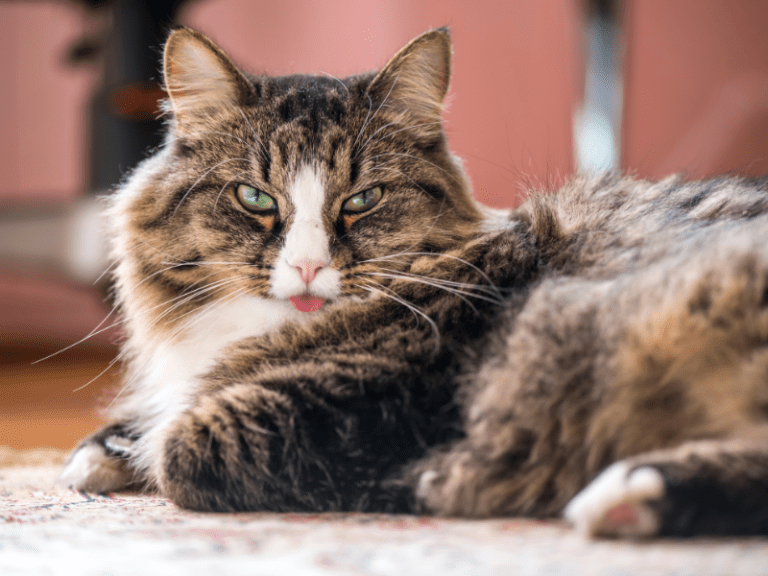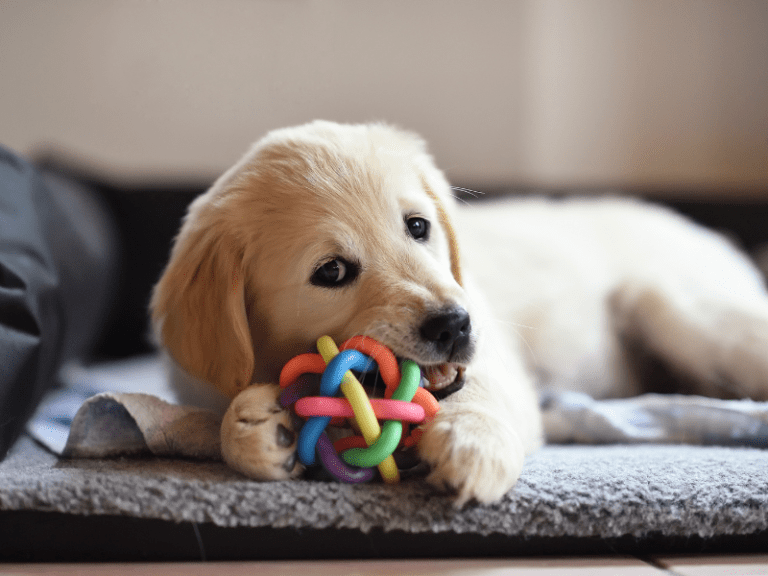Helping Your Reactive Dog: Easy Steps to a Happier, Calmer Pet
FULL DISCLOSURE: The links I share in this course ARE my affiliate links. This means I earn a commission, at no extra cost to you. In fact, sometimes you’ll get a discount or free credits just FOR using my link. 🙂
If you have a reactive dog, you know how much work it can be to train them and keep them calm in challenging situations. Reactive dogs can become easily overwhelmed in crowds, around other dogs, or even by loud noises. You can help your reactive pup become a happy, confident canine with the proper training and socialization.
This blog will explore tips and tricks you can use to help manage your reactive dog and ensure they are comfortable in any situation.
Dog Reactivity Versus Dog Aggression
When it comes to dogs, there is a big difference between reactivity and aggression. Understanding the difference between the two is important to keep everyone safe and ensure your pup is living its best life.
The AKC states that the difference between a reactive dog and an aggressive dog is that a reactive dog acts out due to anxiety and fear, while an aggressive dog acts out to cause injury.
Dog Reactivity
Reactivity refers to an over-the-top response to a particular event, object, or person. It is typically seen in anxious, scared, or stressed dogs.
Dog reactivity is an emotional response to a stimulus, such as another dog, person, or object. Reactive dogs may bark, growl, lunge, or generally be over-excited in the presence of the trigger. This reaction is an emotional response and not intentional aggression.
Dog Aggression
On the other hand, dog aggression intentionally displays hostile or violent behavior towards another animal or person. Aggressive dogs may bite, snarl, or lunge with intent to harm.
Aggression is often a learned behavior and can be caused by frustration, fear, or a desire to protect resources (territory or food). Various factors, such as fear, lack of socialization, or a medical issue, can cause aggression.
In order to keep your pup safe and ensure they are living their best life, it is important to know the difference between reactivity and aggression.
If your dog is showing signs of reactivity, it is important to address the underlying cause and work with a professional to find an appropriate solution. If your pup is exhibiting signs of aggression, it is important to seek professional help immediately in order to ensure everyone's safety.
Signs That Your Dog May Be Reactive

Signs that a dog may be reactive include:
- Barking, growling, and lunging when exposed to triggers.
- Unwillingness to interact with other dogs and people.
- Avoidance of certain environments.
- Hypervigilance and/or sensitivity to touch.
- Increased heart rate and/or panting.
- Cowering or seeking comfort from a person.
- Destructive behaviors such as chewing, digging, and pacing.
A reactive dog may also become overly aroused or anxious around people or other animals.
What Causes a Dog to Be Reactive?
There are various reasons why a dog may be reactive, including genetics, environment, lack of socialization, fear, anxiety, or aggression. Some dogs may be predisposed to reactivity due to their breed or genetics, while others may develop it in response to a particular situation or environment.
A dog may also be reactive due to leaving its mother too early. When a dog is separated from its mother too early, it is likely to be stressed and anxious. This can lead to fear and aggression in new or unfamiliar situations.
Additionally, the lack of socialization during the critical development period can lead to reactive behaviors when the dog is exposed to new people, animals, or environments.
How to Assess if your Dog is Reactive
Reactive dog behavior is when a dog is overly excited or distressed in response to specific situations or stimuli. It can manifest as barking, lunging, or other aggressive behavior.
Identify the Triggers
In order to assess and understand reactive dog behavior, it is important to understand the triggers that cause it in the first place. Triggers can include a variety of stimuli, such as other dogs, people, loud noises, or certain environments.
Reduce Dog's Stress
Once the triggers are identified, it is important to take steps to reduce the dog's stress and anxiety in those situations. This can include desensitization and counterconditioning techniques, such as introducing the dog to the trigger in small doses, teaching them new behaviors, and rewarding them for calm behavior.
Know What Causes the Behavior
It is also important to understand the underlying cause of the behavior. This can be due to fear, anxiety, or lack of socialization. Understanding the root cause can help the owner better manage the behavior and help the dog better cope in triggering situations.
Talk With An Experienced Trainer or Veterinarian
Finally, it is important to consult with an experienced trainer or veterinarian if the behavior is severe or persists. They can provide valuable guidance on addressing the behavior and help the dog become a more well-adjusted pet.
Tips for Helping Your Reactive Dog
If your dog is exhibiting reactive behaviors, here are a few tips to help you help your dog.
Create a Positive Environment
It is important to create a positive environment for your reactive dog. Provide plenty of mental stimulation with toys and puzzles and plenty of physical exercise. This will help to keep your dog calm and relaxed.
Start Small
When introducing your dog to new people or other dogs, start small. Have them interact in a controlled environment with just a few people or dogs. This will help to keep the situation manageable and your dog's stress levels low.
Use Treats
Food is a great way to reward your dog for good behavior. Have treats available when introducing your dog to new people or other dogs. This will help to reinforce positive behaviors and create a positive association.
Use a Leash and Collar
Using a leash and collar when introducing your dog to new people or other dogs will give you more control over the situation and help to keep your dog from getting over-excited.
Head Halter or Body Harness
Using a head halter or body harness can help to reduce your dog's reactivity and give you more control when they are out and about.
Desensitize
Desensitization is the process of slowly exposing your dog to the situation that triggers its reactive behavior in a controlled and positive environment. This will help your dog become comfortable with the situation, and their reactions may lessen over time.
Seek Professional Help
If your dog's reactive behavior does not improve with the tips mentioned above, it is important to seek professional help. A professional trainer or behaviorist can help you identify the root cause of your dog's reactive behavior and provide personalized advice and tools to help you manage it.
Using A Certified Behaviorist or Trainer

Working with a certified behaviorist or trainer to help with reactive dogs can be incredibly beneficial.
Help Identify Triggers
A certified behaviorist or trainer can work with you and your dog to identify the source of the reactivity and create an individualized plan to help modify the behavior. With their professional guidance, you can learn how to better manage and recognize triggers and effectively communicate with your dog.
Provide Tips and Advice
They can also provide tips and advice on effectively using positive reinforcement and reward-based training to shape your dog's behaviors and create a better relationship between you and your pet.
Understand Approach and Methods
When working with a certified behaviorist or trainer to help with reactive dogs, it is important to understand the behaviorist or trainer's approach and methods. They may use positive reinforcement and desensitization techniques to help your dog become less reactive. They can also provide tips and strategies for managing your dog's triggers.
Make Sure to Follow their Advice
It is important to follow the behaviorist's or trainer's advice and be consistent in your approach. It is also important to keep in mind that progress may take some time, depending on the specific issue and your dog's temperament. With patience and consistency, you and your dog can make great strides in improving their reactive behaviors.
Sometimes the behaviorist may have you talk with your vet about using medication.
Medication to Help Reactive Dogs

Medication may be used to reduce anxiety or aggression, such as anti-anxiety drugs like benzodiazepines, antidepressants, and sedatives. Anti-anxiety drugs can help reduce the dog's stress levels and make it easier for the dog to learn new behaviors and trust people in its environment.
Make sure to consult with a veterinarian or a certified animal behaviorist before starting any new medicines or treatments.
Take Steps Today to Help your Reactive Dog Live a Happier Life
Helping your reactive dog can be difficult, but it is possible. With patience and consistency, you can teach your dog to manage its reactions better and help them become more confident and calm.
Remember to provide positive reinforcement, use desensitization, and practice counterconditioning to teach your dog to respond more positively to triggers.
With the proper training and positive reinforcement, you can help your reactive dog become more comfortable in new situations and enjoy life to the fullest.






